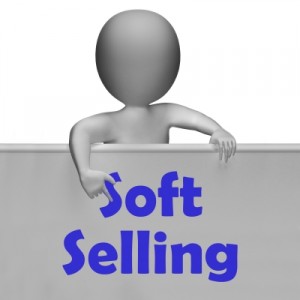
image courtesy of stuartmiles/freedigitalphotos.net
“Selling with e-newsletters softly, with his words, selling me softly…” Wasn’t that a song about a million years ago? No? There was one something like that, though--right?
Many businesses such as accountants, lawyers, insurance agents, real estate brokers, architects, chiropractors, and coaches dislike the hard sell. They love the products and services they provide, helping make people’s lives and businesses better. But their work is most fun when their prospects and customers come to them.
That’s what content marketing is all about…getting customers to come to you online. But how do you get known in your marketplace? How do you establish your authority with so much competition on the Web? And how do you get Google to rank your site higher in search?
One of the best ways to stand out is soft selling with an educational e-newsletter (also called email newsletters or e-zines). These are emails that contain short articles that are helpful for your audience. You use stories to offer tips, ideas, and commentary on the latest industry news to inform, entertain, and build relationships.
Newsletters like this are inexpensive to produce. Remember, there are no printing costs! You use an opt-in email service like AWeber or MailChimp so you know you’ll be complying with spam laws and you can easily track opens, clicks, and subscription activity.
If you're a subscriber to my free content marketing email, then you received the summary to this article from my service, AWeber.
The Advantages of Soft Selling With E-Newsletters
• E-Newsletters cost much less than old fashioned direct mail. No printing costs and email service providers can start at just $10 or so per month. (For a certain number of emails per month, Mail Chimp is free!)
• They position you as an authority in your marketplace. You become the “go-to” experts because you’re looked at as the most knowledgeable for the services you offer.
• Results are measurable. Your email service shows you the open and click through rates quickly and easily.
• High return…just one new customer easily pays for the whole campaign.
• You open up a two way, visitor-centric dialogue with your audience. People will respond to your articles by calling your firm or on your website if you connect your newsletter to your blog.
• Your articles are easy for your readers to share either by forwarding the email or on social media if you’ve placed the balance of the article on your website. (I highly recommend you place the article lead in the email and get your readers to click onto your website to read the rest. This will usually be your blog.)
So where do you get the subjects for your articles? I teach clients to think like publishers. Keep track of the daily happenings in your firm. It’s all possible subject matter that you can turn into interesting, readable stories.
For example, are people calling your accounting firm about the Affordable Care Act? Write a series of articles for businesses to make it easier to wade through the more difficult aspects of the law.
Does your law office see lots of middle aged couples taking care of their elderly parents and wondering about assisted living? How about an article on how to evaluate assisting living facilities.
Insurance agencies, especially here in the northeast, can offer seasonal articles on wood stoves in winter and how to insure the golf clubs you keep at the country club in the summer.
I also recommend to clients that before they launch an e-newsletter, they plan their topics well ahead of time. And, if they write the articles in advance, they won’t be scrambling for the current week’s article that they haven’t gotten to yet. (This can take a lot of time, so keep in mind I can help you here.)
Remember, these articles aren’t sales pitches. They’re informative, helpful information that you offer your email list for free. It may take a little time, but soon enough you’ll notice the results of the soft sell with e-newsletters.
They may even write a song about it!
Until next time,
Nick
Another article of interest...
PS. With Halloween coming at the end of the month, I turned the other night to Edgar Allen Poe for some scary reading. Regarding my post on the use of oddball punctuation in your Web writing, I caught some slack for my positive regard for exclamation points.
Well, Eddy Poe (that's what his mother called him) leads The Tell-Tale Heart with this sentence, “True!—nervous—very, very dreadfully nervous I had been and am; but why will you say that I am mad?”
So after the very first word in the story he uses an exclamation point!! In fact, in just the one sentence he used an exclamation point, em dash, em dash, semi-colon, italics, and a question mark. If Eddy can have some fun setting the tone with punctuation—you can too!
Nick Burns is a Web writer specializing in persuasive copywriting and content marketing. Nick’s services include SEO Web writing, website information architecture, content marketing, consulting, and publishing. He provides clients a winning online strategy plus the content writing to make it work. You can contact Nick here.
